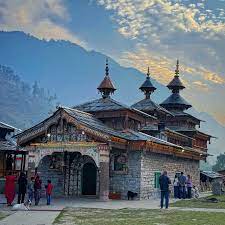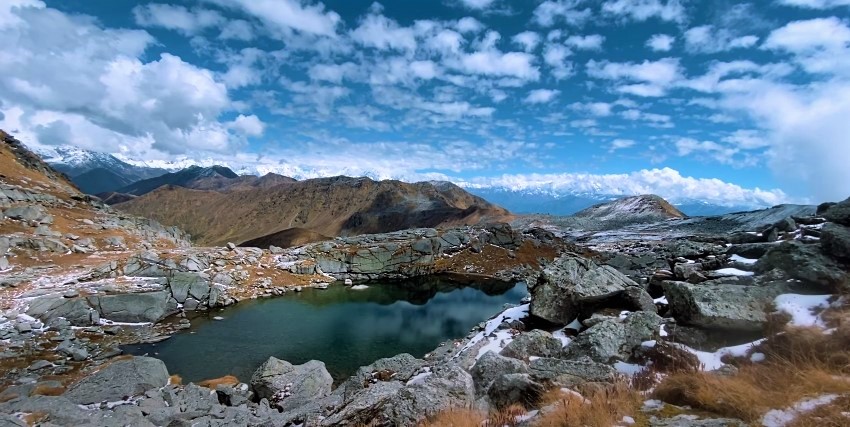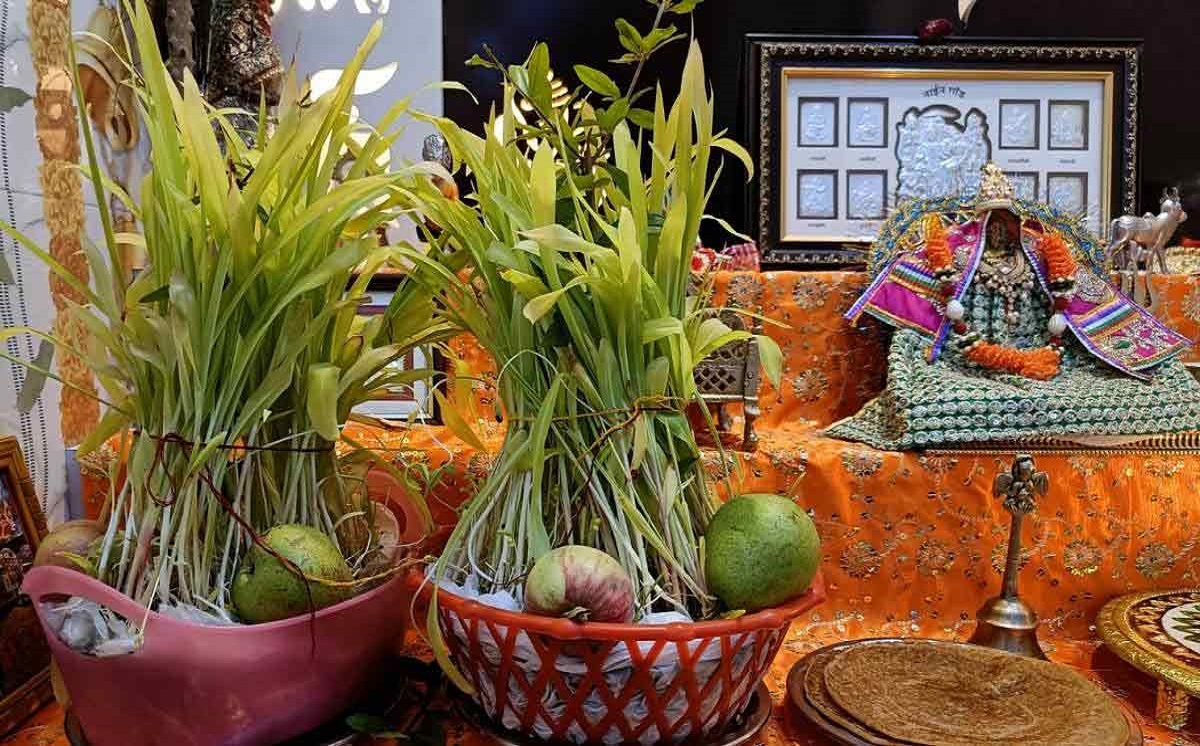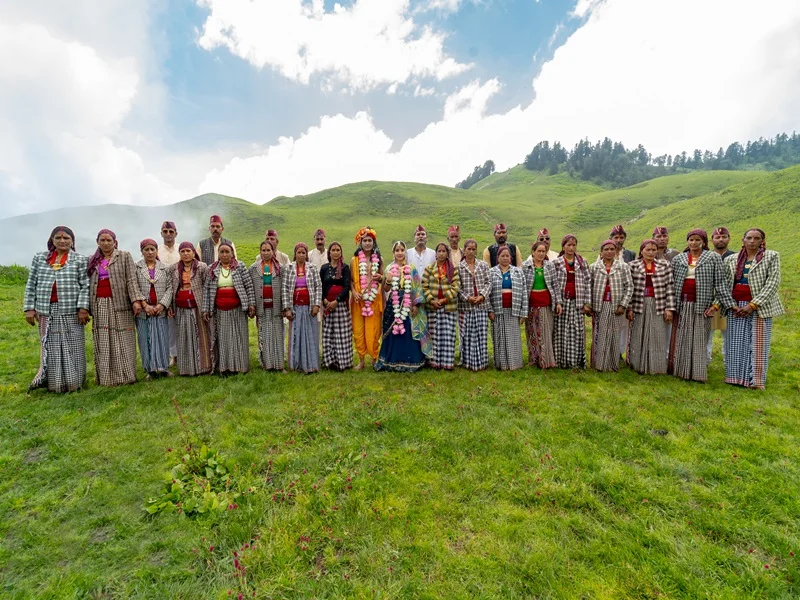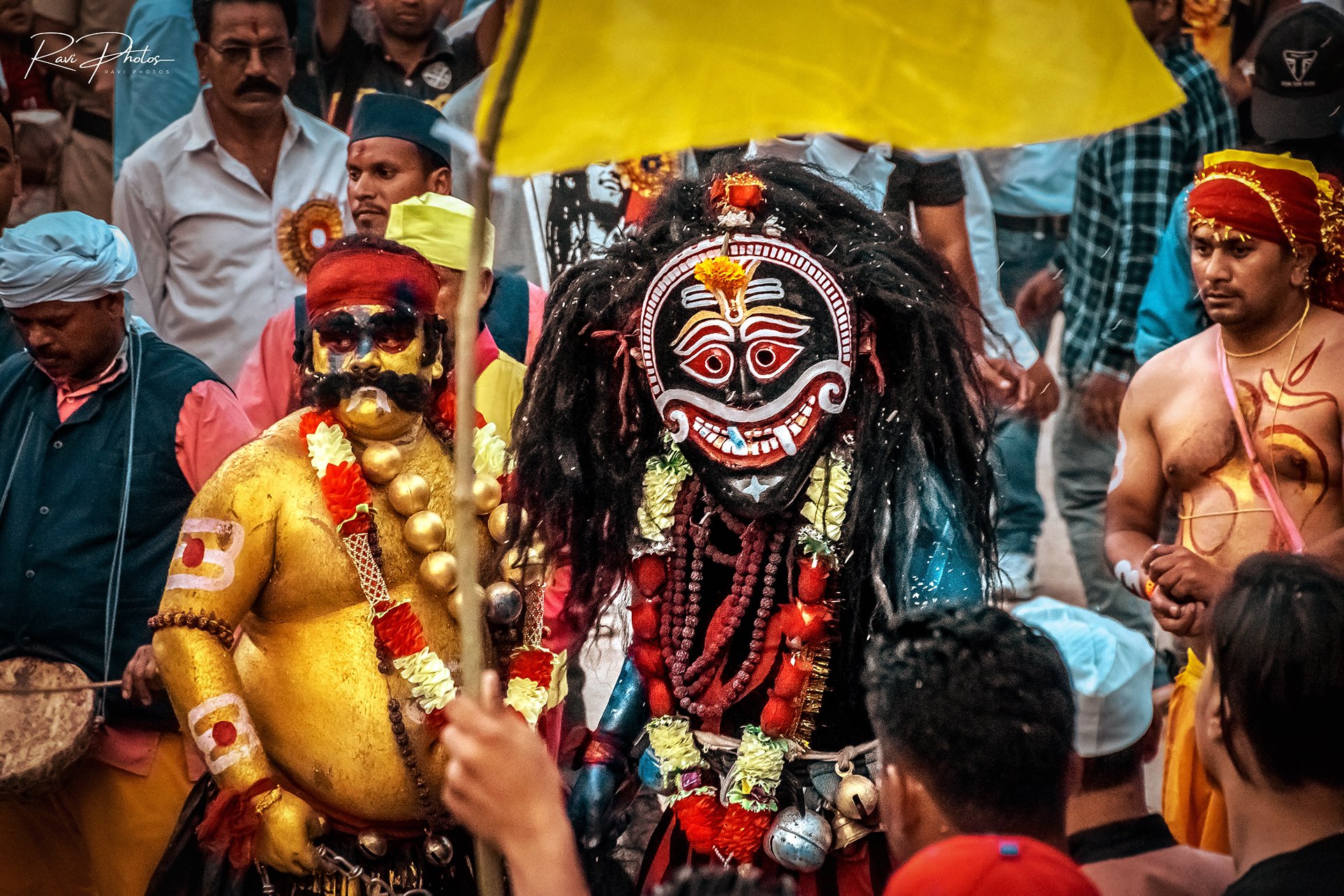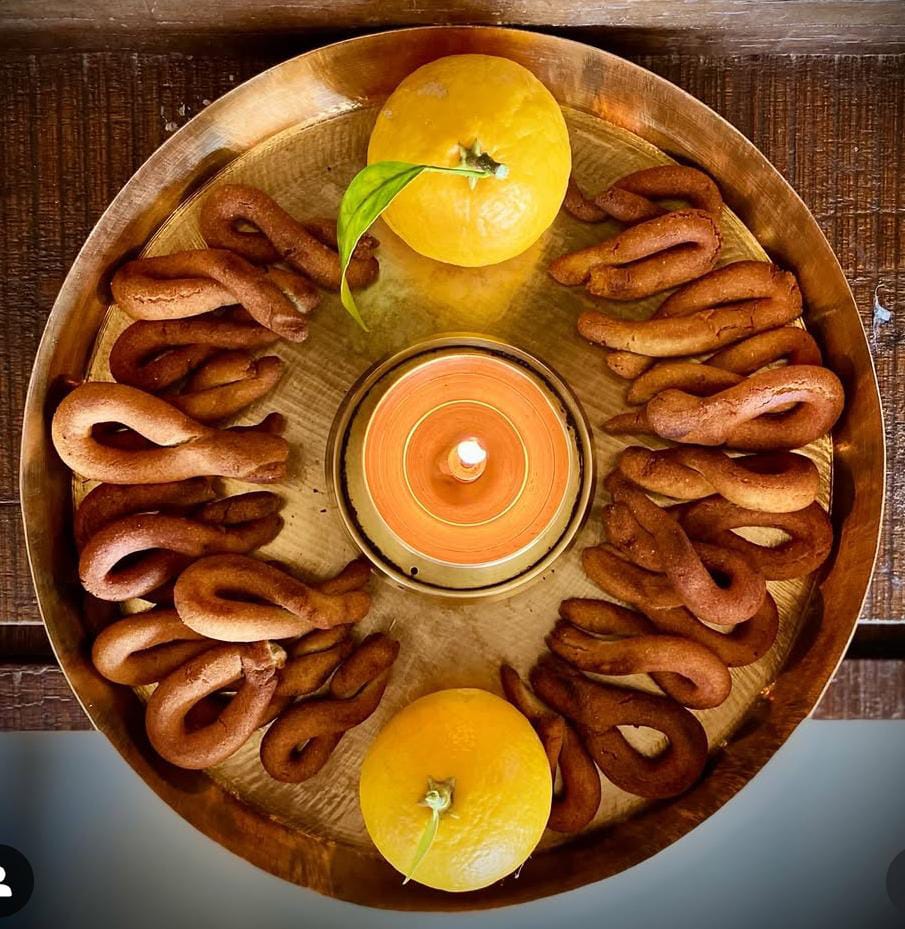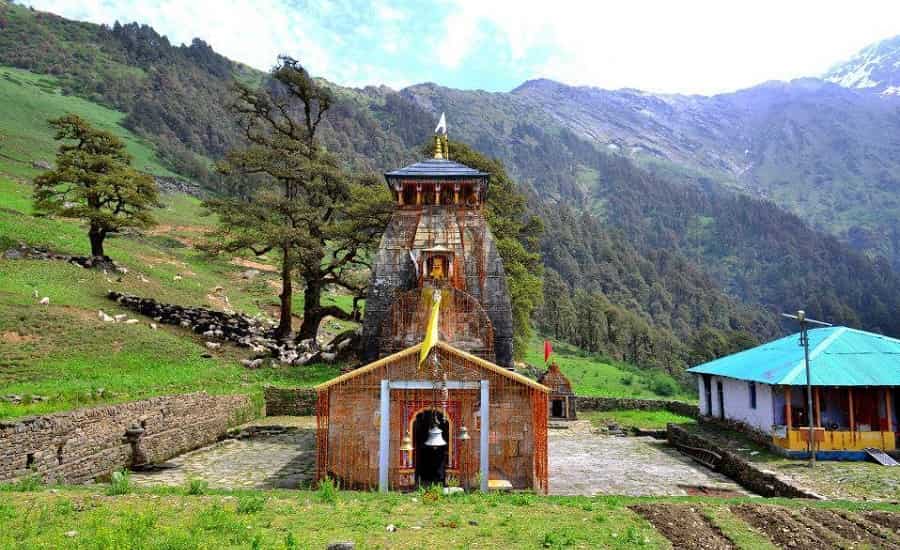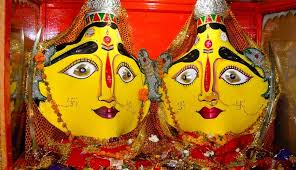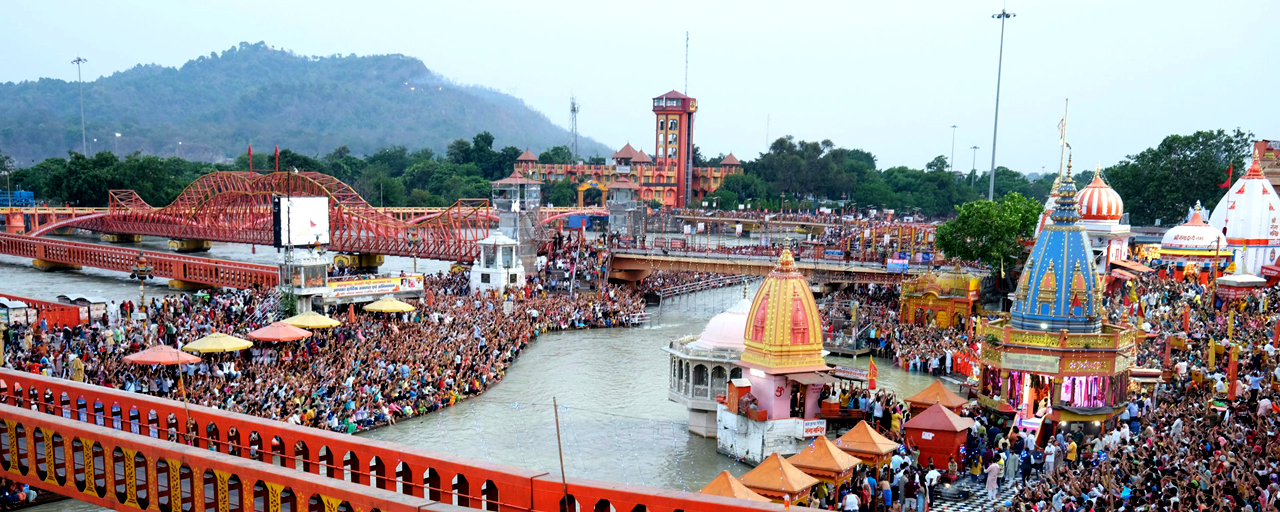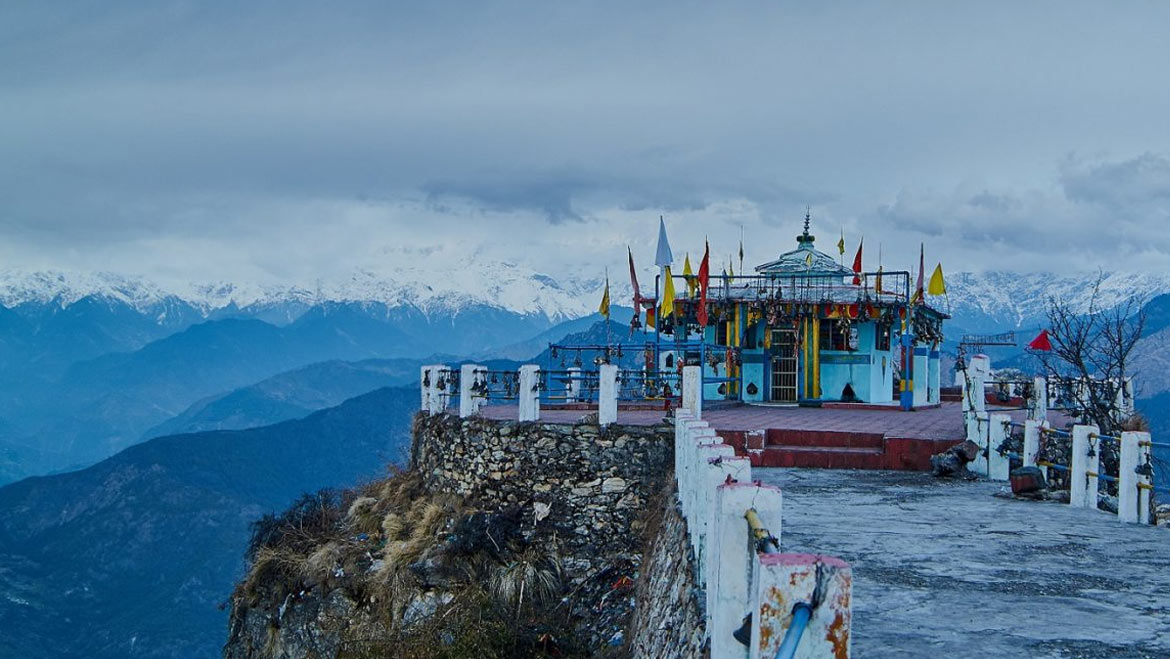In the Jaunsar-Bawar location of Uttarakhand, while the month of भाद्रपद (Bhadrapad) arrives, something stirs in temple courtyards and woodland paths. People gather, drums begin, processions form, masks emerge, this is Jagda (जगदा / जागड़ा / जागरा), the festival of Mahasu Devta, the god of justice, in whose name the hills echo with tune and reverence.
Jagda is more than ritual; it's a living bond that ties an individual to their land, to their legends, to their ancestors.
Where and When It Happens
Jagda is widely recognized within the villages of Jaunsar-Bawar, in particular inside the precincts of Mahasu Devta temples. Temples like the vintage Mahasu temple at Hanol, at the banks of the Tons River, turn out to be focal points.
The pageant commonly falls on the third and 4th day of Bhadrapad, which regularly coincides with Ganesh Chaturthi. In those days, the devotees introduced the idol of Mahasu in a palanquin and took it through villages, singing folk songs, dancing, and invoking blessings.
The neighborhood people say: during Jagda, Mahasu himself walks with his devotees. When the procession passes through a village, it is believed that divine power descends, people feel it, children are blessed, and grievances are washed away.
The Legend of Mahasu Devta
To understand Jagda, you need to know Mahasu. In local lore, Mahasu Devta is not one but four brothers Botha Mahasu, Pavasik Mahasu, Basik Mahasu, Chalda Mahassaid to be born from the furrows of a plough by Huna Bhatt, after lengthy penance and divine sanction. Together with their mother, Devladli Devi, they defeated demons that had terrorised villagers.
Over time, Mahasu Devta became worshipped as the lord of justice, a guardian of social order in these hills. The term "Mahasu" itself is sometimes seen as a variant of Mahashiva, hinting at his deep connection with Shiva.
The stories passed down in households speak of Mahasu descending during crisis, resolving disputes, punishing wrongdoers, and protecting the land. When the Jagda festival comes, people invoke those stories, believe that He becomes present among them.
What Happens During Jagda
Jagda unfolds like a play mixed with devotion and community. The sequence is not rigid everywhere, but these are common threads:
Procession with the Idol
The idol of Mahasu Devta is placed on a palanquin (palki). Devotees carry it through village lanes. The route is often decided by elders. People line up on either side. Bells, cymbals, and drums accompany every step.
Music, Dance & Folk Songs
Folk musicians and local dancers join. They perform traditional dances Choliyas, Jhoras, Chancharis, Bairas accompanied by the beats of nagara, dhol, and local string instruments. The songs are devotional, sometimes witty, praising Mahasu’s deeds, asking for blessings.
Rituals in the Temple Courtyard
When the procession reaches the temple grounds, rituals are offered. Offerings of rice, ghee, flowers, and sometimes a goat sacrifice (in some local customs) occur. The priests lead havan, aarti, and chant mantras.
Night-long Vigil & Celebrations
The celebrations often last through the night. People sit around lamps. Stories of Mahasu’s miracles are recited. Songs echo into hills. Devotees remain awake, watching masks and the flame of devotion flicker under stars.
Return and Blessings
On the 4th day, the idol is returned to its shrine, accompanied by more music and prayers. People gather to receive prasadam (blessed food), blessings from priests, and the feeling that something sacred touched their lives.
Character, Costume & Mask
A special feature of Jagda is the use of masks and costumes. Some devotees become mask bearers, transforming into mythic beings for the duration of the festival. Their masks represent local spirits, Mahasu’s attendants, and even animals.
Costumes often involve colorful cloth, bells, and wooden ornaments. Some mask characters dance ferociously, throwing themselves into a trance, their steps echoing ancient rhythms.
These masked dancers are not mere performers they are channels. In their movement, people feel the divine, the ancestral, the natural, and all blending.
Why Jagda Still Endures
- Jagda survives because it speaks to very human needs. It gives voice to those who seek justice, it brings community together, and it renews faith in divine protection.
- In remote villages with few institutions, Mahasu Devta is often seen as a judge over disputes. People come to him through festivals, prayers, and personal faith.
- Jagda keeps folk art alive songs, instruments, masks, dance forms.
- It gives identity. Even as youth migrate, the festival becomes a seasonal anchor—“Home during Jagda” is often said.
- It binds generations. Elders recall dancing when they were children in Jagda; children now carry the same drum, wear the same ornaments.
Experience Jagda: Tips & Impressions
- If you want to feel Jagda rather than just see it, here are suggestions:
- Visit Jaunsar-Bawar or Hanol temple area during late Bhadrapad.
- Stay in a village if possible. Homestays allow you to hear early morning chants and see masks being prepared.
- Dress modestly and in local style (a shawl, simple shoes).
- Go early with the procession. Walking with the idol is where ritual and community converge.
- Sit in the masked temple courtyard during the night vigil. Let the rhythm, the stories, and the stars speak to you.
- Record folk songs. Ask elders to sing Mahasu tales. Their voices carry years.
A Memory from Jaunsar
I once walked a narrow path under moonlight, following the Mahasu palanquin up to a hilltop in Jaunsar. The forest held hush, broken only by distant drums. I saw masked figures waiting behind trees, eyes glinting. When the procession stopped, villagers lit lamps and offered rice. A child held a lamp and sang:
“महासू देवता हमारे, रक्षा करना इस भूमि को...”
In that moment, centuries seemed to fold. The mask, the chant, the flicker of lamps they were all part of one living story.
Challenges & The Future
Jagda is not untouched by change. Migration means fewer people in villages. Younger generations may lean toward modern festivals. Some folk arts are fading.
Yet, many locals resist losing it. Cultural organisations document songs. Young folk troupes practice rhythms. Some Jagda celebrations now attract visitors, bringing visibility and funds.
If Jagda fades, we lose not just a festival but a way of seeing the world where gods walk among people, where justice is invoked in rhythm, where tradition is home.
Closing Thoughts
Jagda (जगदा) is not a spectacle. It is present. It is the hills waking with ale, the songs rising around temple courtyards, the mask-bearer dancing under a starry night, the faithful walking, chanting, believing. In Jagda, Mahasu comes home into hearts, into memories, into the pulse of hills.
If you ever find yourself in Jaunsar-Bawar during Jagda, step inside walk in the procession, listen for the drum, stay under darkness with lamps. Let the festival teach you that in every mask, in every chant, lies the voice of a people who still believe the sacred walks among them.

